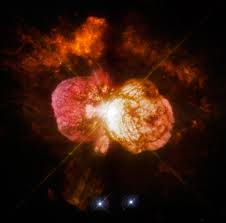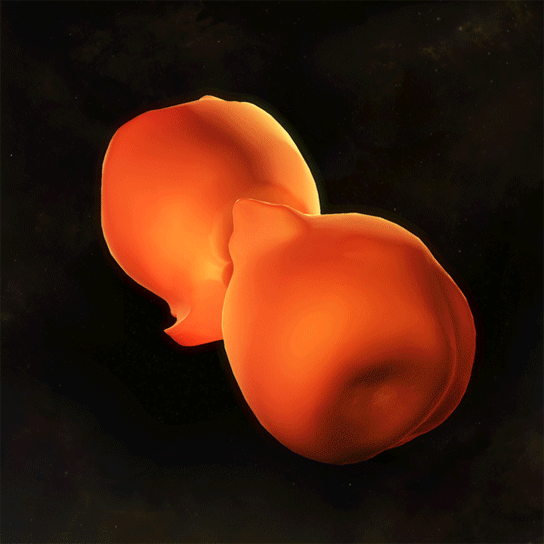Imagine being able to hold the universe in the palm of your hand. If you’re an astrophysicist, that’s probably all you ever imagine—astronomy being a science where “hands-on” means looking through a telescope at something millions of light-years away.
Or it did, until NASA managed to create the first ever 3D-printed model of a nebula.

If you happen to have access to a D-printer, and also happen to be an astrophysicist or astronomer, this is great news, particularly because NASA has made the plans for the 3D-model public. You simply need to download them, feed them into your 3D-printer, and voila! You have your very own hands-on model of an expanding gas cloud right in front of you.
The model, which depicts the collection of light, dust, and gas known as the Homunculus Nebula, was created using “Shape” software, by astrophysicist Wolgang Steffen, at the National Autonomous University of Mexico. This particular gas cloud has been around since the mid-1800s, ever since the binary star system called Eta Carinae—which was located about 7,500 light years away from Earth, when it still existed—erupted with an explosion so brilliant it become known as the second-brightest star in the sky for a time.

The gas cloud currently measures one full light year across, and has been steadily expanding out at a rate of 1.3 million miles per hour, so creating an accurate 3-D model of it was a somehat tricky process. Using an X-shooter spectrograph and the European Southern Observatory’s VLT (Very Large Telescope), researchers took 92 different slices of the nebula system, as opposed to the normally five they’d used to map it previously.
The researchers then imaged visible, ultraviolet, and near-infrared wavelengths of light to create what is the most complete spectral map ever, according to NASA. The researchers used this data to create a shape model, which they then 3-D printed.
This model will provide astrophysicists with the opportunity of actually studying such a formation up-close, which should lead to several intriguing discoveries. For more information about the model, you can check out the video below:
Source CNET
Advertisement





